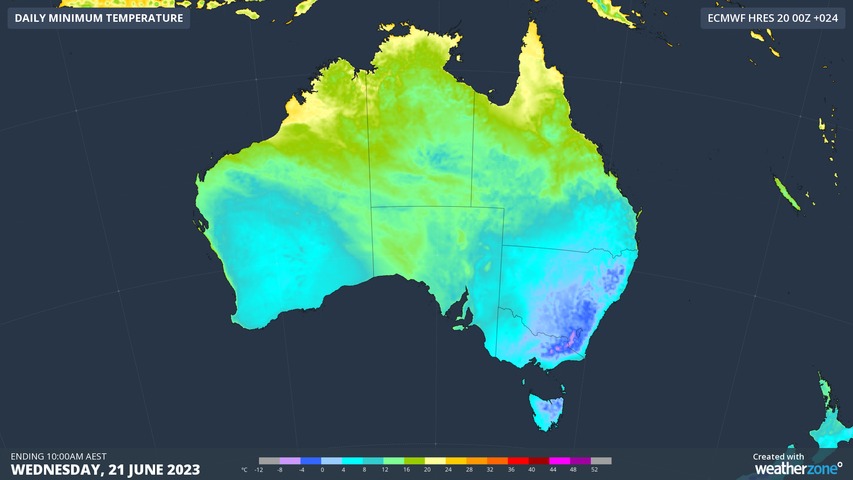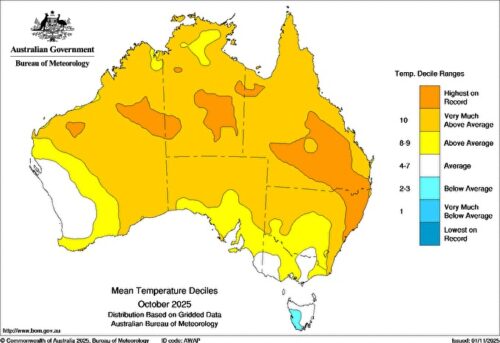A large area of Australia’s southeast inland just shivered through the coldest morning in five years, with one location registering Australia’s lowest June temperature since 2019.
Wednesday morning was an icy affair across southeastern Australia as a slow-moving high pressure system caused clear skies and light winds to combine with a lingering cold and dry air mass. This wintry weather pattern resulted in widespread frost from Tasmania up to Queensland.

Image: Modelled minimum temperatures on Wednesday morning, according to the ECMWF-HRES model.
Here are some of the standout minimum temperatures from Wednesday morning:
- Canberra’s low of -7.2ºC was its lowest temperature since 2018 and the lowest for June since 1986
- Sydney’s 5.2ºC was the city’s coldest June morning since 2010
- Newcastle (Nobbys Head) hit 4.3ºC shortly after 7:00 am, which was its coldest morning in 23 years
- Bathurst (-7.5ºC), Mudgee (-6.9ºC), Orange (-6.6ºC), Dubbo (-4.7ºC), Campbelltown (-1.6ºC), Casino (-0.2ºC) and Gayndah (0.3ºC) all had their coldest morning in five years
- Perisher Valley’s -10.1ºC was Australia’s lowest June temperature since 2019
- Tocal’s -0.3ºC was its lowest June temperature in records dating back to 1970

Temperatures also dropped as low as -7.2ºC in Victoria (Mount Hotham Airport) and -6.3ºC in Tasmania (Liawenee). Queensland’s lowest temperature on Wednesday morning was -3.5ºC at Applethorpe. The ACT’s lowest temperature was Canberra’s -7.2ºC.

Image: Frost on Federation Mall in Canberra on Wednesday morning. Source: AAP / Mick Tsikas
DTN APAC can provide super-rapid forecast updates every 5 minutes so you can stay ahead of the competition. To find out more, please visit our website or email us at apac.sales@dtn.com.






